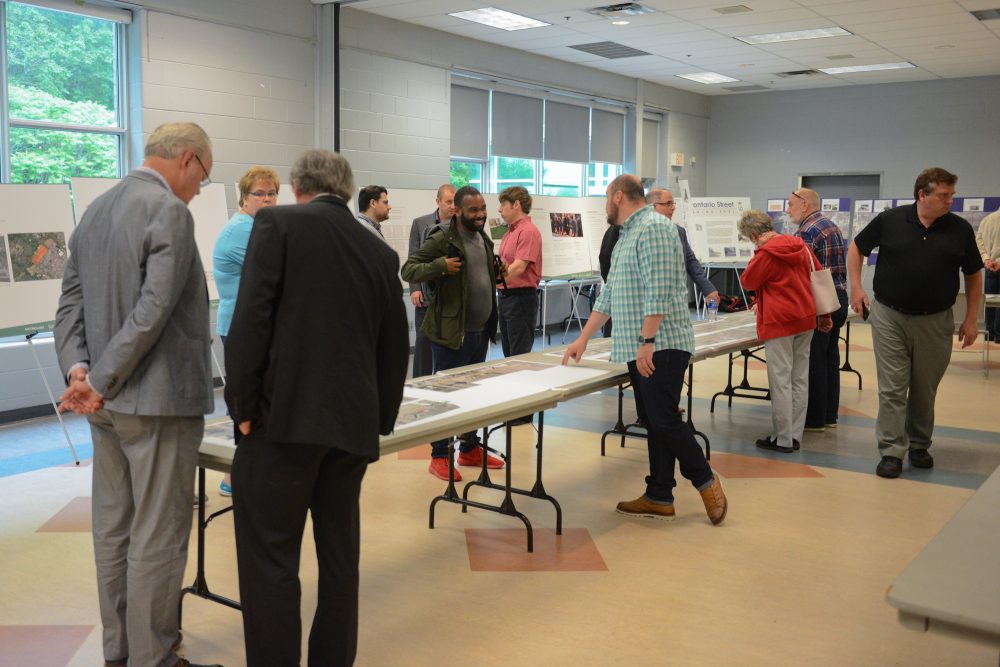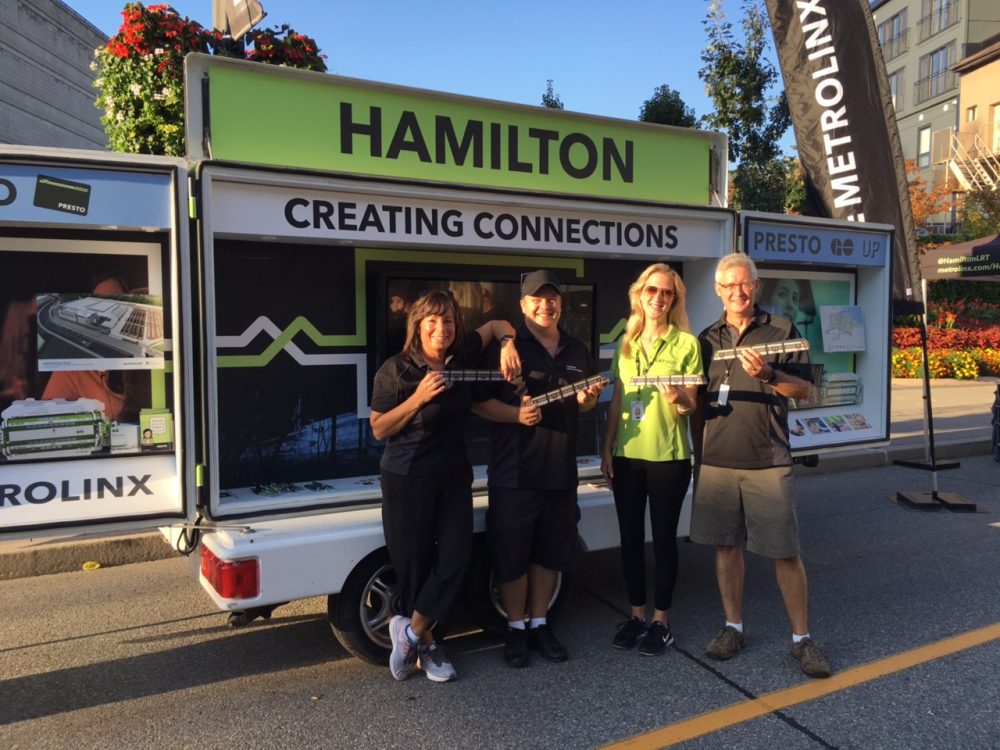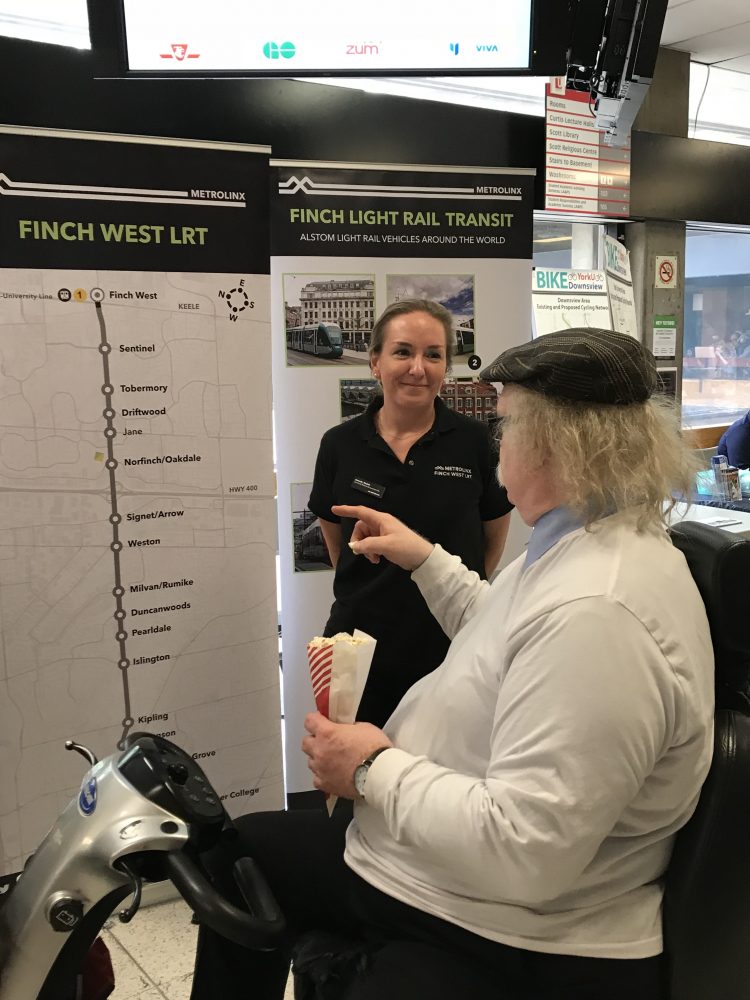Blog
Community Engagement at the Core of the Metrolinx Commitment to Planning and Building Transit
November 12, 2018The neighbours like to pop by with questions when you’re building one of the largest and most ambitious infrastructure projects in North America. Lots of questions!
Even some complaints.
At least a couple of times a day, staff at one of the two Metrolinx community offices, located along Eglinton Avenue in Toronto, greet curious residents who stop. The staff take down their comments, or just chat about the 19-kilometre Crosstown LRT project, still under construction.
“You want to engage people because you want to inform them, educate them and get them involved in terms of what we’re building,” said Jamie Robinson, director of community relations for Metrolinx. “It’s to build support and give us a social license to proceed and get things built.”

This is the core commitment Metrolinx has made: to engage with people in the more than 30 communities where we work. While we’re known for moving people through the region on GO Transit or UP Express, we’re also building and maintaining relationships where future transit is being planned and under construction.
Finding different ways to engage with communities is extremely important, given the wide variety of stakeholders involved – from nearby residents, business owners and community associations, to local politicians and special interest groups.
With the massive GO rail expansion program and other light rail transit projects at an earlier stage, community and stakeholder relations teams have been active in communities throughout the Greater Toronto and Hamilton Area.

Regular meetings, consultations and workshops take place through the planning phases. There are open houses, community events and door-to-door canvassing as well.
“Upfront, it’s typically those people you need to engage with, you need to consult with when you’re deciding what it is you’re trying to build,” Robinson said.
Metrolinx invited 36 volunteer residents to be a part of a Residents’ Reference Panel while putting together the recent Regional Transportation Plan. During the design and procurement process, in advance of construction, community advisory committees and citizen panels are also set up.

Some of the most direct ways of connecting with those who are interested in Metrolinx projects is through our website, social media or by e-mail.
Social media channels offer up-to-date information on construction and progress on a daily basis as well as notifications for any events and activities Metrolinx is involved in.
“To me, the most important thing is when you’re engaging folks, you engage them in the way that works best for them,” Robinson said. “You have to understand who your audiences are.”
A key part of the community work Metrolinx does while in the construction phase of our projects is managing community concerns and complaints. Campaigns to inform the public in advance of work being done are always taking place. Listening and responding to people in a timely manner is a top priority. Letting them know we’ve taken their issues and concerns seriously is crucial.

Giving back to communities is essential when disruption takes place and there is so much work being done. It stems from being a responsible part of the community, while building trust and respect.
Enhancing the public realm with streetscape improvements, pedestrian and cycling infrastructure is done as part of the design and construction of projects.
Another method for improving public space is through the use of integrated art. At the start at 2018, an announcement was made that six stations along the Eglinton Crosstown would include works from a variety of artists in the facilities.
The Metrolinx Community Benefits program is setting the bar for other organizations by providing employment and apprenticeship opportunities as part of its projects. Local companies and suppliers are offered support throughout, as well.
Connecting communities and engaging with them. It’s what we do at Metrolinx. It means providing information on what we’re doing at public meetings to being available when someone simply pops by the office from around the corner.


